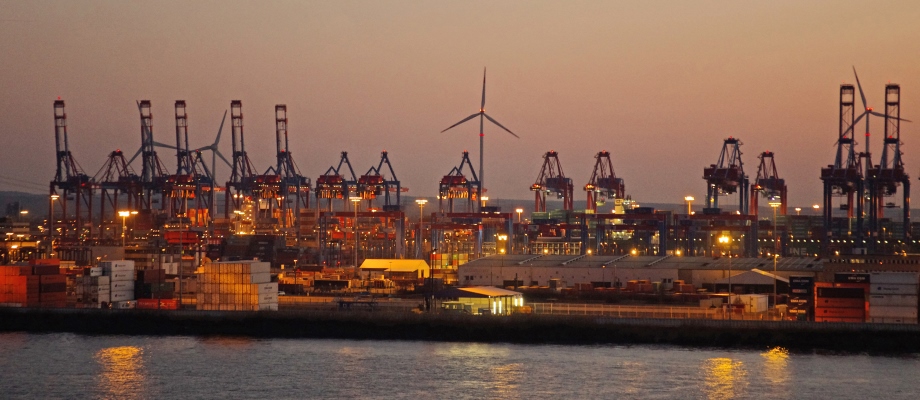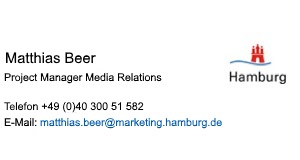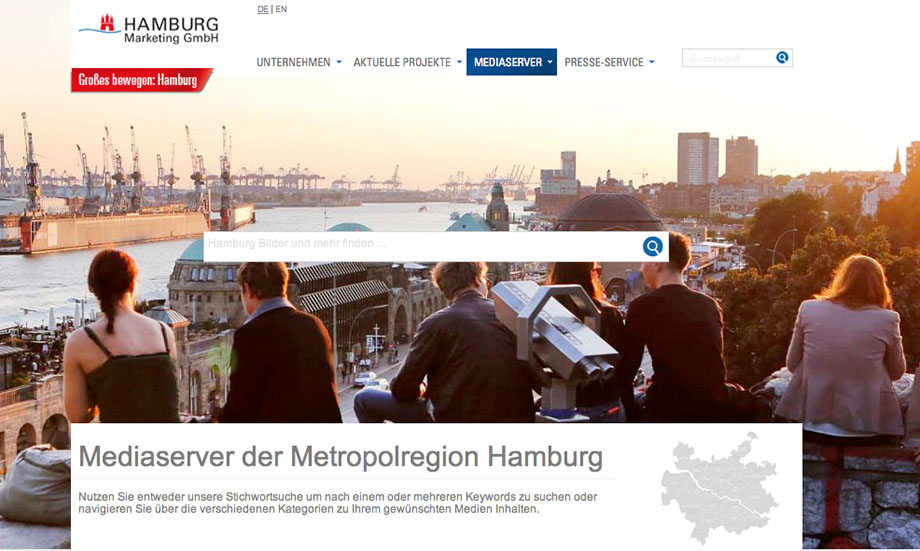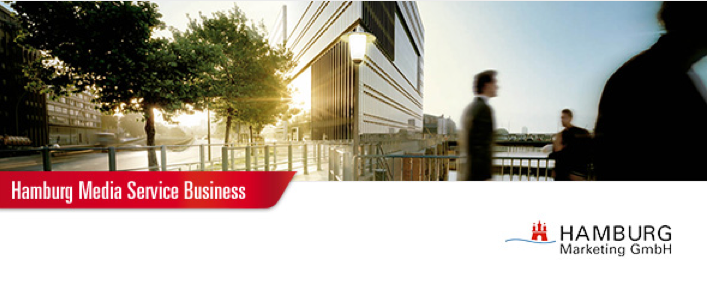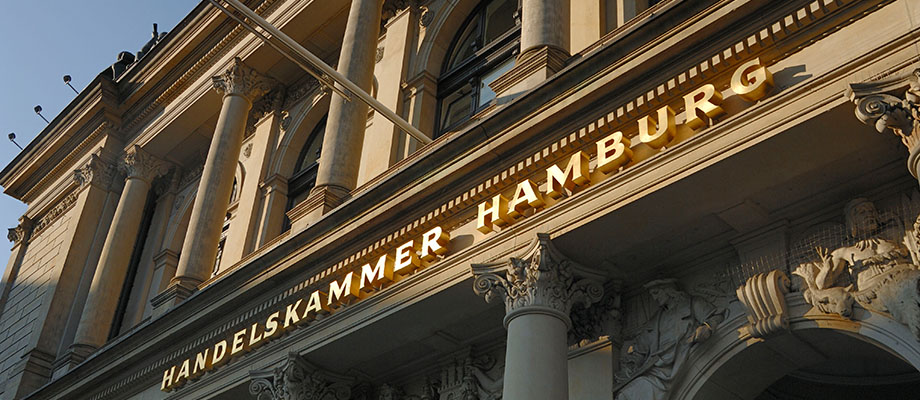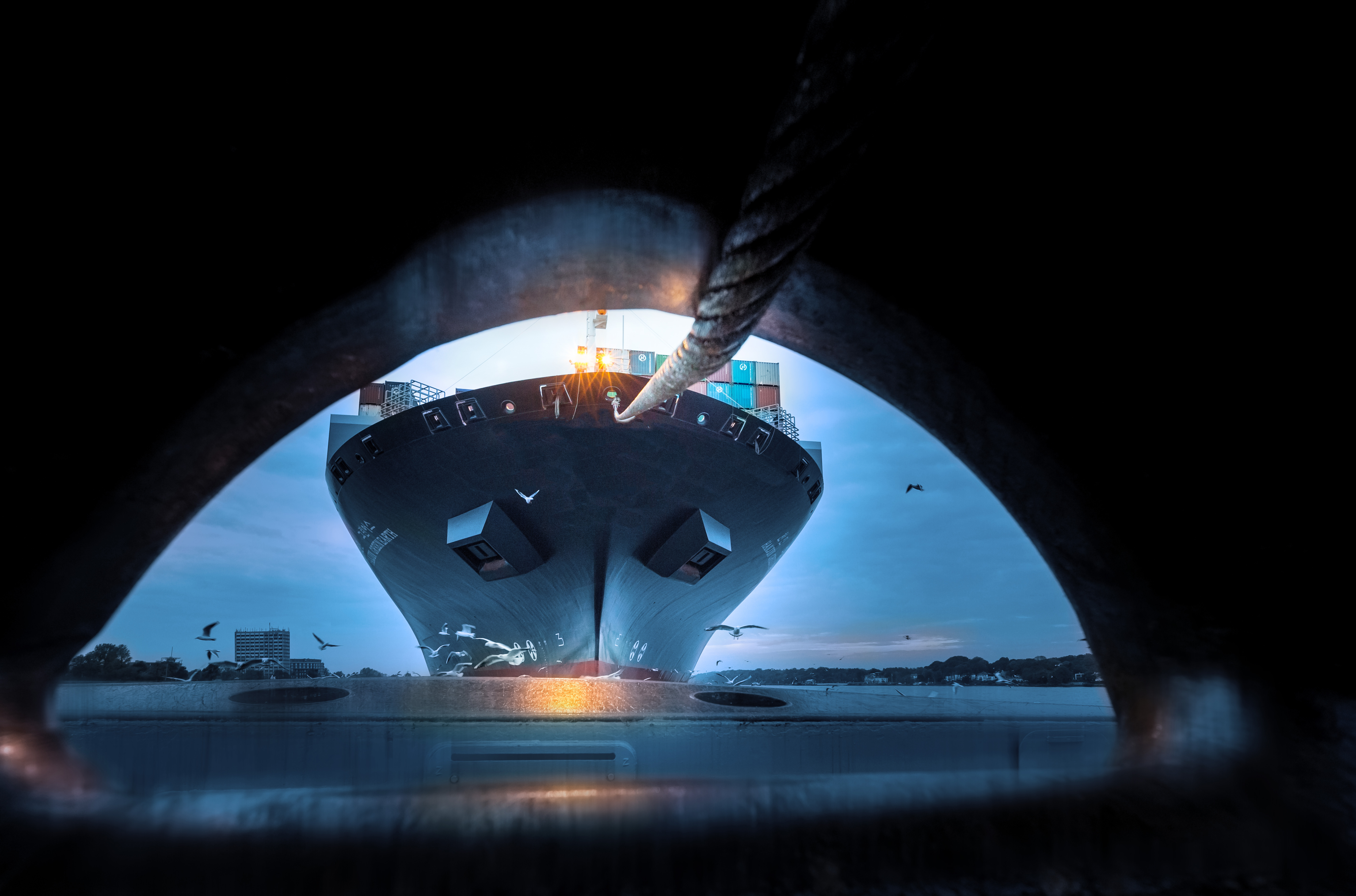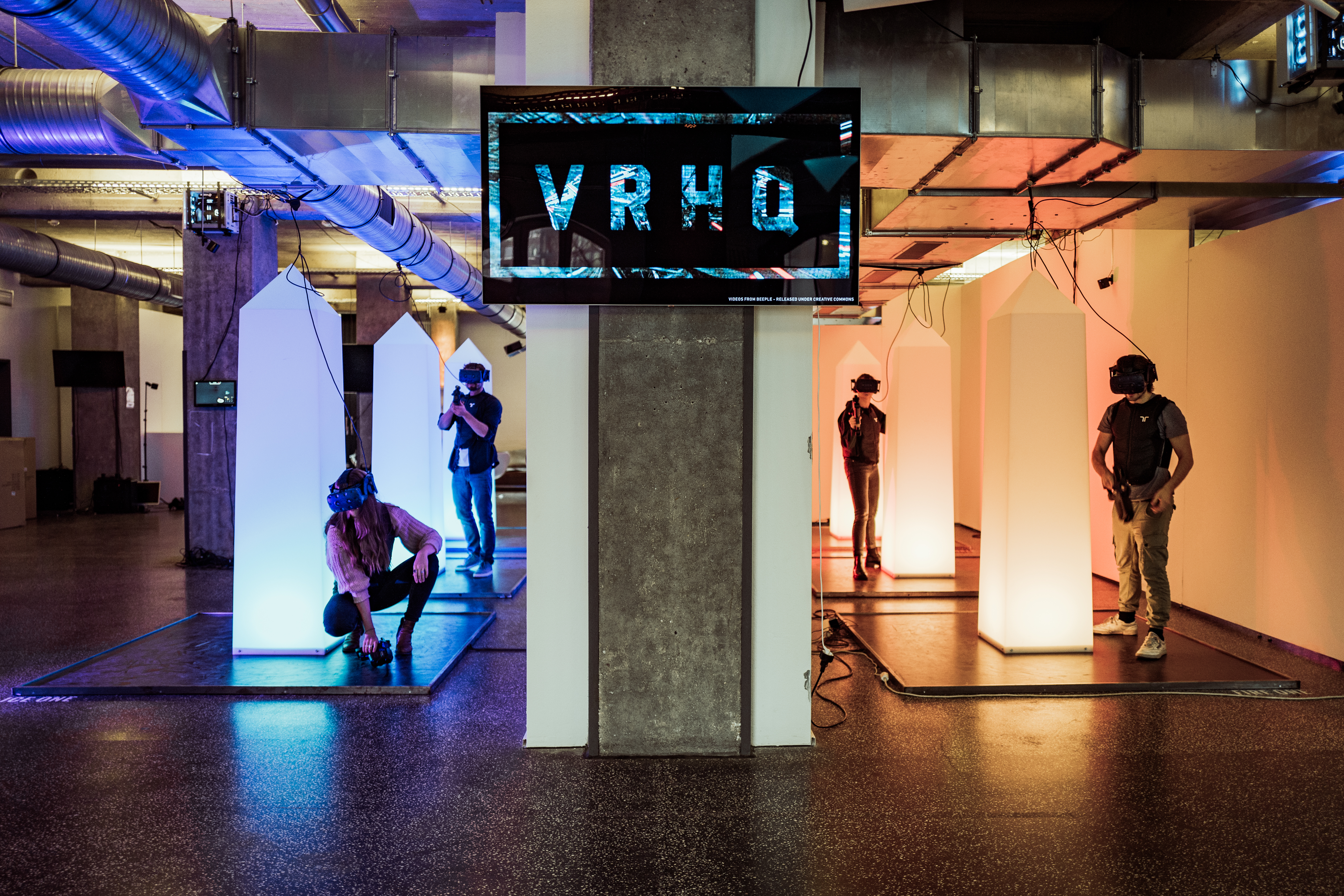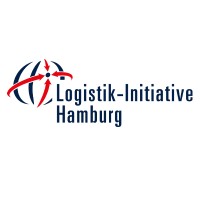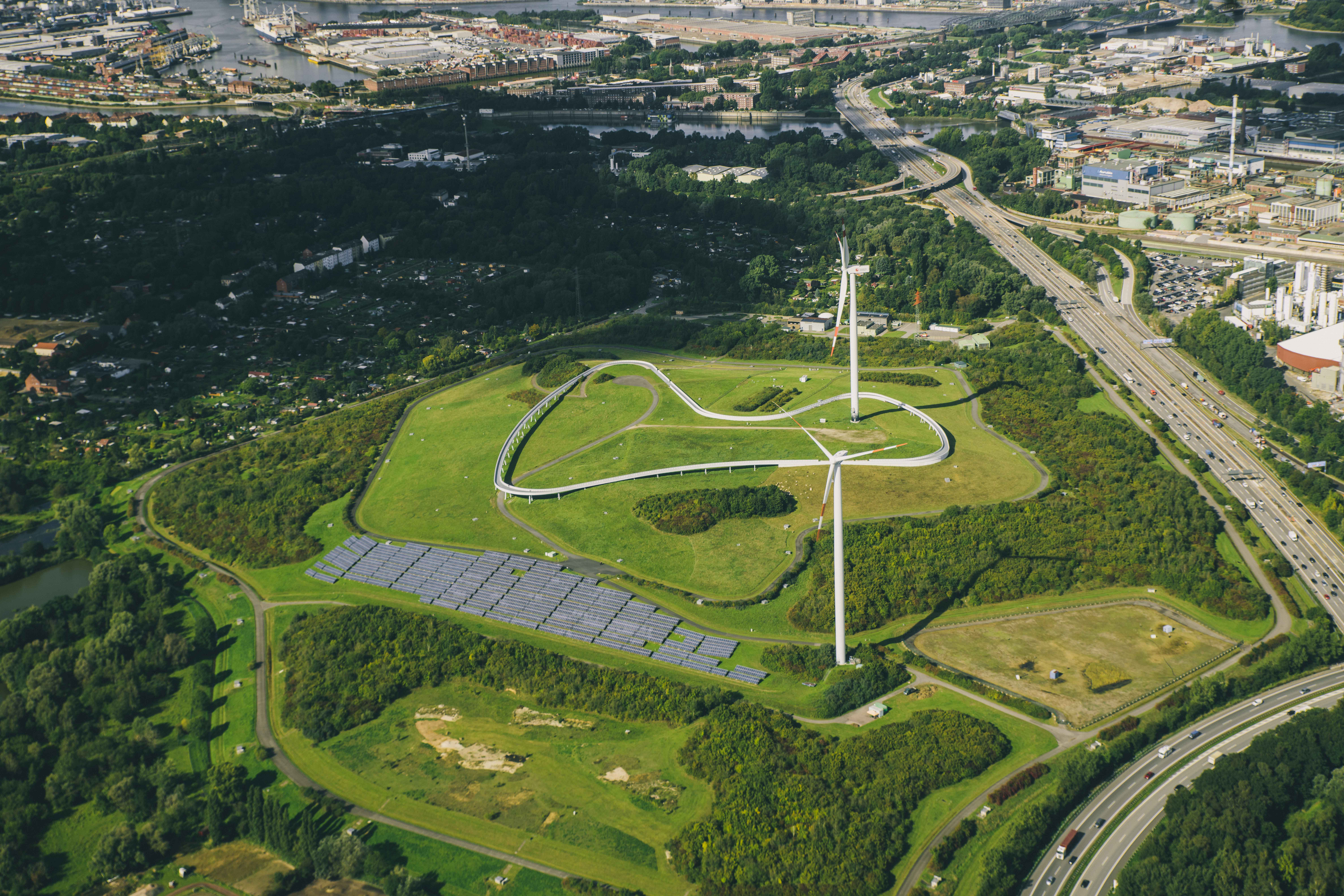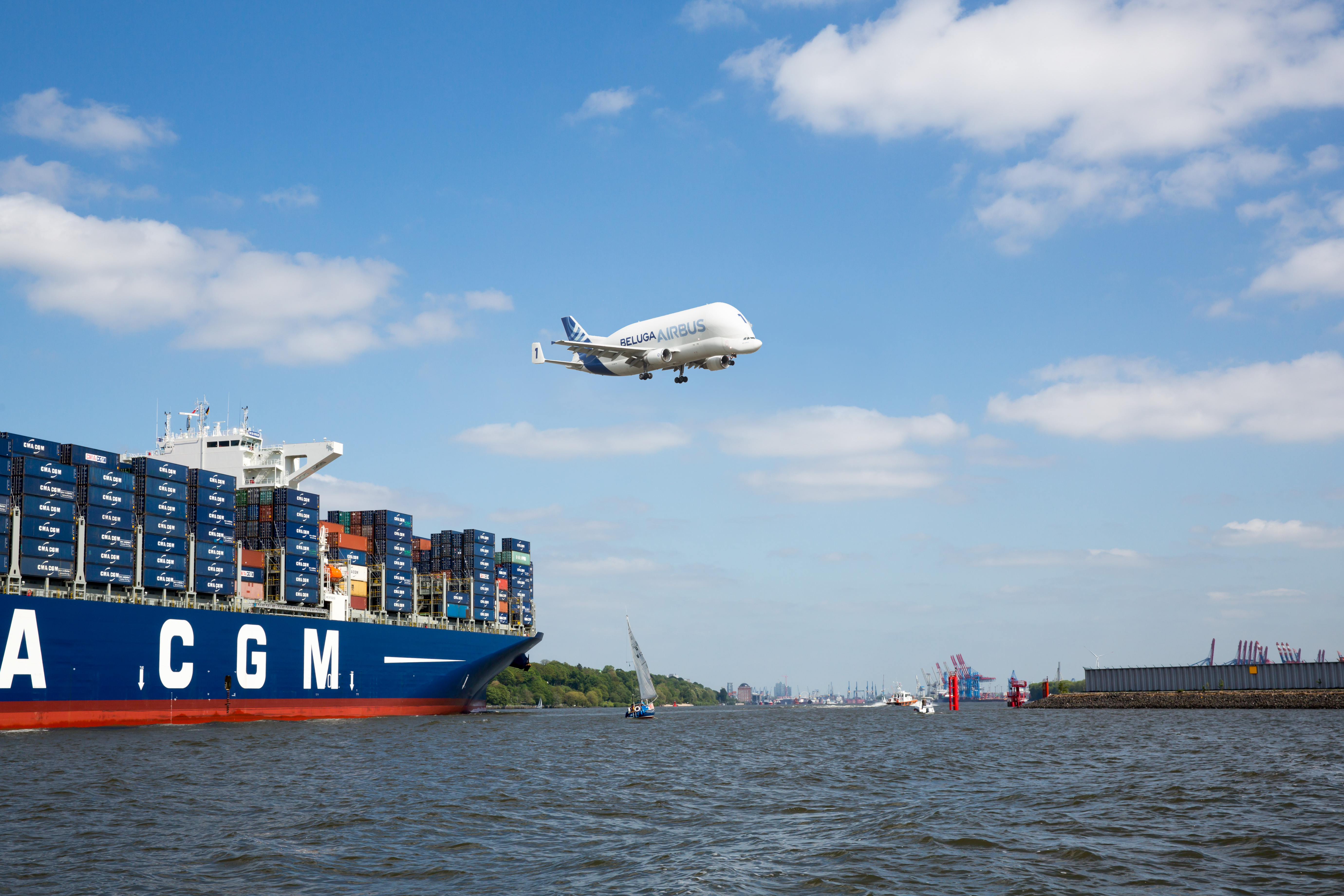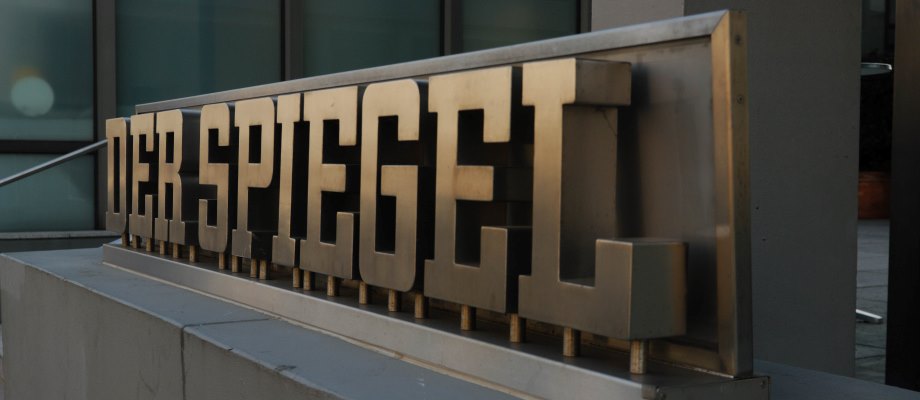Energy Transition in the Port: an Economic Success Story
More and more companies in the port of Hamburg are installing their own wind turbines to generate their own energy. This proves cheaper for port companies and increases their efficiency. Hamburg’s smart energy projects also demonstrate that renewable energies are economically competitive – and the city is turning into a showcase for Germany’s energy transition.
Hamburg’s port is centrally located in the heart of the city. On the Elbe beach, locals and tourists watch the passing container ships from around the world with fascination. On the other side of the Elbe, state-of-the-art container gantry cranes can be seen loading and unloading some of the world’s largest freight carriers. Against the impressive backdrop of the port, the three wind turbines of Nordex SE, a north German equipment manufacturer, rise nearly 200 metres into the sky. These wind turbines are visible proof of Germany’s ongoing energy transition. Rising energy prices and stricter requirements for environmental protection have led businesses in the port of Hamburg to rethink their energy policy.
The container terminal operator Eurogate has operated its own wind turbine with 2.4 megawatts of output for almost one and a half years. “With a power output of more than 8 million kilowatt hours, we exceeded our goal in 2014,” says Gordon Friza, the responsible project coordinator at Eurogate. To save costs on purchasing electricity from other energy companies, the company waives the lucrative feed-in tariff for renewable energies, which is provided by the Federal Government. This allows Eurogate to use the electricity generated by its own wind turbine. By decreasing their expenses on purchasing electrical power, Mr Friza expects that Eurogate’s investment of around 4.8 million euro will pay off over five years. Eurogate initially started by installing photovoltaic systems (PV) on their premises and now focusses on an intelligent power generation mix. In spring 2014 an additional combined heat and power plant (CHP) was put into operation. “Two-thirds of power consumption at the Hamburg terminal are already being met through the CHP, solar energy and wind power,” explains Mr Friza. In addition to its on-site power generation, Eurogate’s environmental strategy further includes resource conservation and efficiency improvements. “Since 2008, we have reduced the power consumption per container handled by 13 percent,” says Mr Friza, who intends to further increase energy efficiency by 20 percent per container by 2020. From major energy consumer to producer.
There are two more wind turbines to be found in the immediate vicinity of Eurogate’s wind turbine, and the prominent logos of “Hamburg Wasser” and “Hamburg Energie” can be seen from Feature Erneuerbare Energien, 02.04.2015 1 von 3 Hamburg Marketing GmbH afar. These two municipal enterprises also place a strong focus on renewable energies. Hamburg Energie, which was launched in 2009 as a public utility for green energy, guarantees customers a 100 percent supply of green electricity and biogas. Hamburg Wasser, the city’s biggest energy consumer, uses the power generated by its on-site wind turbine to fully supply its Köhlbrandhöft wastewater treatment plant. In the summer of 2014, the company installed an additional wind turbine. The Köhlbrandhöft plant purifies some 450,000 cubic metres of wastewater per day, making the plant one of the largest of its kind in Europe. The plant includes ten digestion towers of about 30 metres in height, and each has a capacity of 8,000 cubic metres. With their coloured lights, the towers are certainly eye-catchers in Hamburg’s port at night.
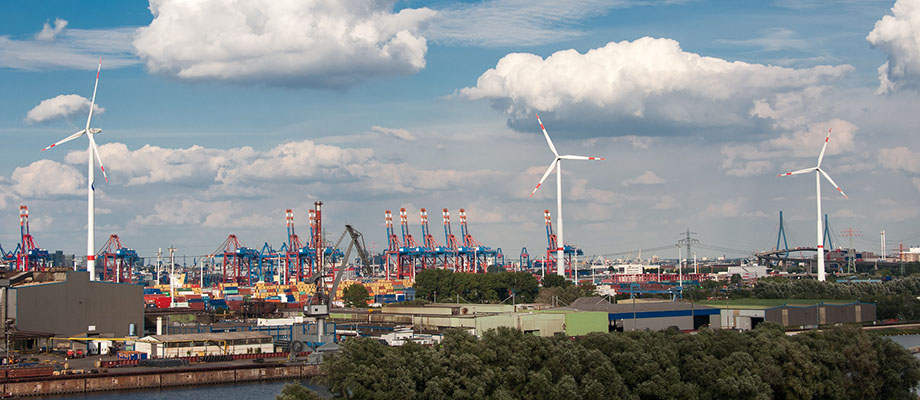
“The energy produced by our two wind turbines lives up to our expectations. About 20 percent of our electricity consumption is covered by these,” says energy manager Lüder Garleff. The remaining energy demand is met by the generation of power from the plant’s wastewater sludge, a process that was introduced as early as 1997. In the plant’s huge digestion towers, gas is created from wastewater sludge. The gas consists of two-thirds methane and one third carbon dioxide (CO2). In the company’s own combined cycle power plant, these gases are converted into electricity and heat. Together with the two wind turbines, the wastewater treatment plant now has a self-generation rate of more than 100 percent, i.e. the plant is fully energy self-sufficient.
In addition, a pilot project was launched four years ago onsite the plant premises. For the first time in Germany, organic nitrogen compounds and carbon dioxide from digester gases were segregated in a wastewater treatment plant of such scale. The processed gas was subsequently fed as biomethane into the public natural gas grid and sold via its subsidiary Hamburg Energie to households and commercial customers across the city. “Last year we were able to convert about 10 percent of our digester gas into biomethane, thereby feeding 22 million kilowatt hours into the grid,” says Mr Garleff. By increasing its share of wind-generated power, the Köhlbrandhöft wastewater treatment plant can thus increase its biogas production and, together with Hamburg Energie, contribute to further reducing CO2 emissions in Hamburg.
A clever mix of renewable energies
These and other projects exemplify the use of renewable energies in the port of Hamburg and the interplay of unique ideas for advancing the energy transition. The Hamburg Port Authority (HPA) aims to promote such measures within the framework of its “smartPORT energy” initiative. The aim is to reduce dependency on conventional energy sources, to reduce emissions and to promote environmentally friendly mobility. Even at this stage, Hamburg as a business location benefits from these measures. Today, Hamburg is considered to be Europe’s wind industry centre. Leading international companies such as Dong Energy, Nordex, Senvion and Siemens Wind Power all have their head offices in Hamburg. The city’s high density of specialised knowledge helps put Germany’s energy transition into practice through innovative solutions – Feature Erneuerbare Energien, 02.04.2015 2 von 3 Hamburg Marketing GmbH such as meeting the port’s energy requirements even in low winds. “With its large industrial enterprises such as steel, copper and aluminum plants, cold storage and container terminals, the port is Northern Germany’s biggest energy consumption site,” explains Jan Rispens, managing director of the Renewable Energy Hamburg Cluster Agency. By the end of 2015, a total of seven wind turbines are to be installed in the port area. Additional plans include the merging of the port’s generation facilities into one virtual power plant, the introduction of a load management system, as well as the development of project ideas and pilot schemes in the field of storage technologies.
Tapping the storage potential
One of these projects is currently being planned by the energy supplier Eon in Hamburg-Reitbrook. The project aims to produce hydrogen from excess wind power in the power-to-gas process using a so-called PEM electrolyser.The municipal utility Hamburg Energie has installed several additional wind power and photovoltaic systems on the Georgswerder Energy Hill, a former landfill that has been renaturalised. What is more, as part of its 10 megawatt project, Hamburg Energie has equipped numerous roofs in Hamburg with solar panels, among them the historic quay hangars “Kaischuppen 50-52” and the roof of the FC St. Pauli football stadium.
Strenghtening Hamburg as a business location
The energy transition and the development of renewables have strengthened Hamburg as a business location. In addition to wind turbine manufacturers Nordex and Senvion, Siemens’s wind energy division has also relocated to Hamburg. Energy companies Dong Energy and Vattenfall coordinate their offshore projects from Hamburg – with the support of local engineering offices and other service providers. “Hamburg is Europe’s most important wind energy centre,” Mr Rispens confirms, while referring to essential synergies created between the more rural areas of the Hamburg Metropolitan Region and the city of Hamburg itself, adding: “With its strong national and international ties, Hamburg combines a lot of know-how in the wind energy sector, and the region is also home to excellent manufacturing facilities.” Every two years the industry gathers at the WindEnergy Hamburg, a trade fair that was first held in September 2014. “With its launch, this leading international wind energy trade fair demonstrated that Hamburg is an important global showcase for the German and European wind energy sectors,” Mr Rispens further states. Looking forward, Hamburg’s port offers numerous other occasions to prove its leading role.
Fact Sheet - Renewable Energies
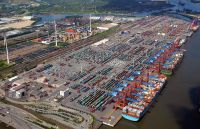
The port-operating company Eurogate aims to reduce energy costs through optimised energy management and an increase in on-site power generation. To meet this end, the company has built a pioneering wind turbine on one of its container terminals. The wind turbine Nordex N117 is intended to provide some 8 million kWh of electricity annually and cover 25 to 50% of the terminal’s power requirements. The turbine is further complemented by a combined heat and power plant as well as solar installations.
Facts & figures:
- electricity demand in the container terminal of 20 million kWh per year on average (dependent on number of containers handled)
- since 2008, an energy data management system has been constantly collecting data on energy consumption
- on-site power generation of around 13 million kWh via the Nordex N117 wind turbine (2.4 MW), combined heat and power plant (1 MW) as well as solar installations
- reducing energy consumption by 20% per container to 47.7 kWh by 2020
Contact:
EUROGATE Container Terminal Hamburg GmbH
Kurt-Eckelmann-Strasse 1
D-21129 Hamburg
Corinna Romke, Head of Corporate Communications, phone: +49 421 142 538 03
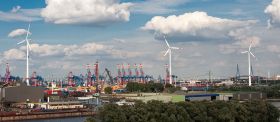
Since the summer of 2014 Hamburg Wasser has been using two wind turbines to generate electricity from renewable sources for the operation of the Köhlbrandhöft wastewater treatment plant. In addition, energy generated from wastewater sludge is converted into power and heat via a combined cycle power plant. Excess gases from the wastewater treatment plant are processed and fed as biomethane into Hamburg’s natural gas grid.
Facts & figures:
- two wind turbines, Nordex N100 (2.5 MW) and N117 (3 MW), supply about 20% of the energy requirements of the Köhlbrandhöft wastewater treatment plant
- combined cycle power plants use gas from wastewater treatment to generate heat and power
- excess gasis traded asbiogasthrough Hamburg Energie GmbH
Contact:
Hamburg Wasser/Hamburg Energie
Billhorner Deich 2
D-20539 Hamburg
Carsten Roth, Head of Corporate Communications, phone: +49 40 788 888 131
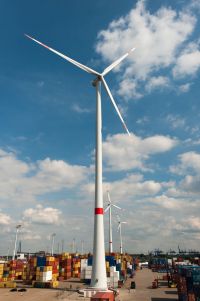
- 1,466 companies with around 24,700 employees in the field of renewable energies
- approx. 56% employment growth between 2008 and 2011
- renewable energy as research focus and key competence at numerous universities
- 60% of global wind energy know-how are reachable from Hamburg within 2.5 hours northbound
- Hamburg is the number one site for developing and managing wind energy in Germany and holds a leading position as a service location for green energy
- Leading companies such as DONG Energy, Nordex, Senvion and Siemens have their head offices in Hamburg.
